THE TRIP SOUTH –
Part 3
We
didn’t expect much wind for the trip down to Lisbon, and that was the case all day, mostly
motor-sailing in light wind, until the evening when the northerly increase and we
sailed a dead run right through the night. We chose to head offshore as the
coast was inundated with lobster pots and the chances of not tangling with on
in the night were poor. This course did take us across the busy shipping lanes
twice, but it was a clear moonlit night and with the aid of AIS and radar I
would rather see my problems. One vessel approaching from behind was identified
as a sailing vessel ‘Mercedes’. The AIS stated she was 35m long and only 8m
beam, a very large and strange ship. She finally crossed about 600 metres
behind us and I shone our lamp her way to see if I could see her, with no
avail. Suddenly the ship lit up revealing a beautiful two-masted tall ship
glowing in the dark, looking like the ghost-ship Marie Celeste. I called them
on the radio and thanked them for the impromptu display. ‘You’re welcome’ came
the reply. I looked up details of ‘Mercedes’ later and she is a new Dutch ship
built in 2005.
We
arrived at Cascais at lunchtime and checked into the marina. At first they wanted
to charge us €160 per night, but after some remonstration they agreed that they
had made a mistake and reduced to a still-expensive €60, even after the ARC
discount. Consequently we stayed just one night and moved on to Oeiras, a new
marina about 5 miles further towards Lisbon.
We spent a pleasant few days there before returning to Cascais on the 1st
October when the marina slashed their rates to a reasonable fee.
The
reason we returned to Cascais was that nice though the marina was there was
nothing else in Oeiras, whereas Cascais is a very pleasant seaside resort with
good shopping and restaurants. Lionel Willis, an old colleague of mine from the
National Maritime
Museum was flying out to help us sail
to the Canaries and Jill, his wife came for a few days in Lisbon before we set sail.
Lionel
knew Lisbon quite well and we had a great couple
of days exploring Lisbon.
We have never been there before and found it a really delightful city. On the
first day we had great fun jumping on and off old wooden trams that scuttle
around the city. Lunch was in an old convent converted to a brewery (!) with
the most beautiful tiled wall pictures. Tea was at an old tea house with
wonderful cakes. You can see that food is dear to Lionel’s heart!
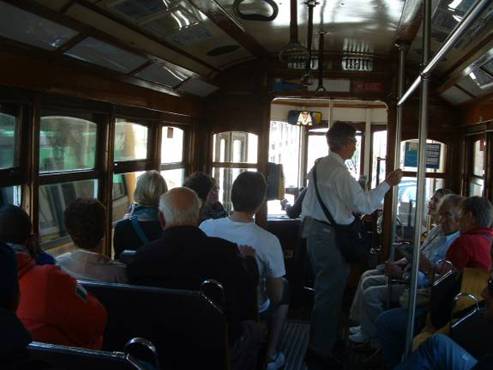
Lisbon tram

Tram somehow fitting through narrow streets. Not even room
for a pedestrian!

The ex-convent /brewery

Stout lassies
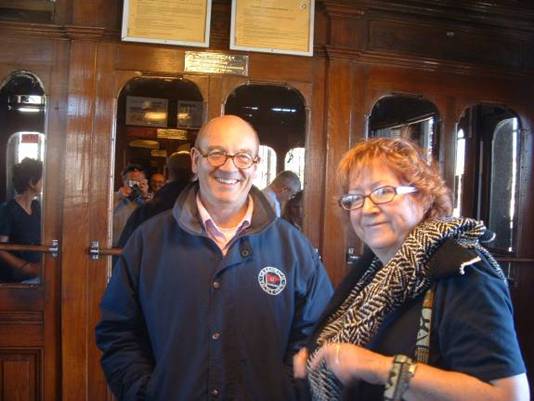
Lionel and Jill on the funicular – yet another mode of
transport

Street sign in Lisbon
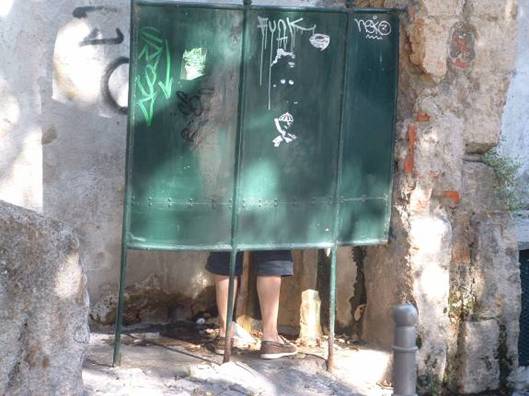
Lionel had to try it
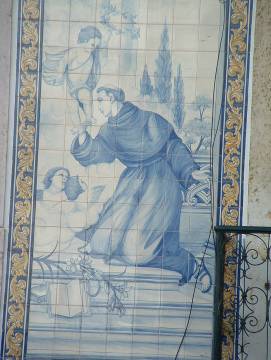


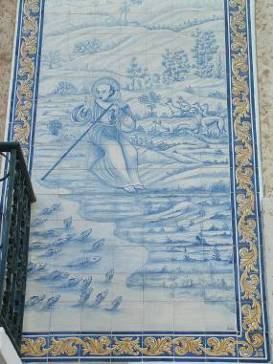
More tile paintings on a house in Lisbon. We guessed scenes from the life of
St. Anthony
Next
day was back to Lisbon, but to the Belem quarter for a
cultural morning (after coffee and cakes of course). Lucy and I went to the
very good maritime museum, Jill to the archaeological museum and Lionel to the
carriage museum. To help us recover lunch was on the veranda of an art gallery
overlooking the river.
For
Jill’s last day we hired a car and drove to Sintra, where the royal family had
their summer palaces. If you ever go to Portugal don’t miss Sintra, especially
the completely bizarre palace of Pena built by King Don Fernando II, He was
obviously mad and had a wonderful time building this fantastic, ridiculous
palace with every possible architectural style all thrown into the mix, and
then paint it pink and yellow!
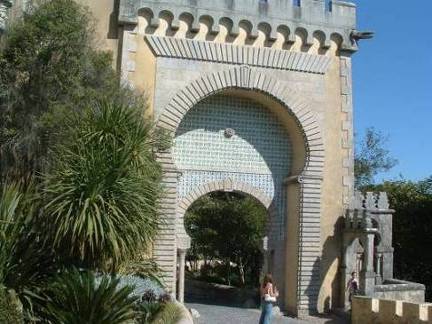

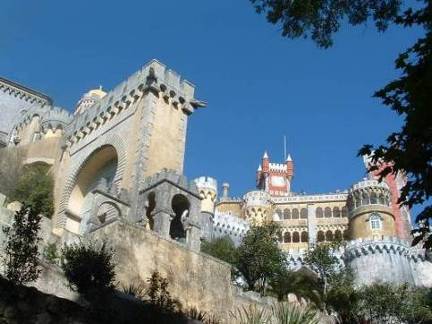

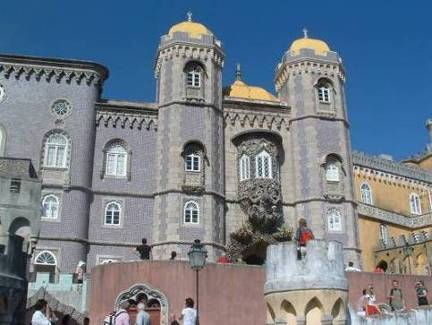
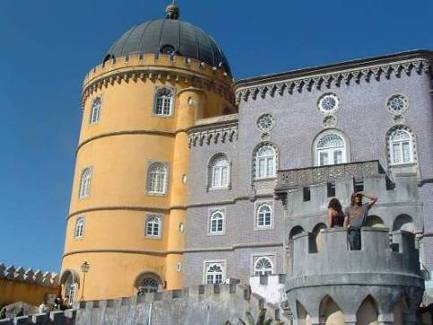

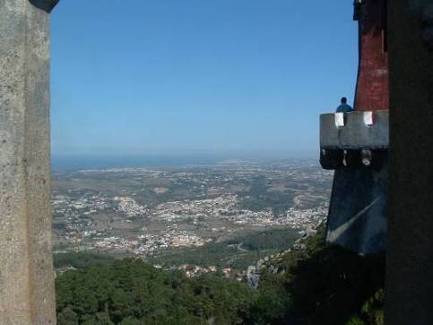

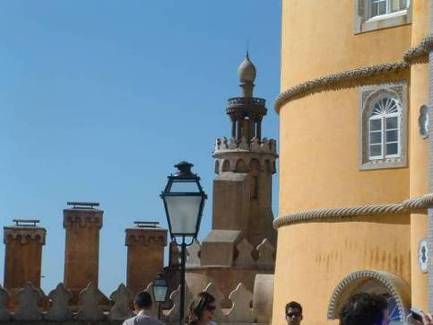
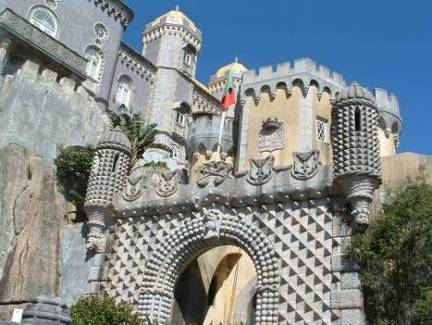
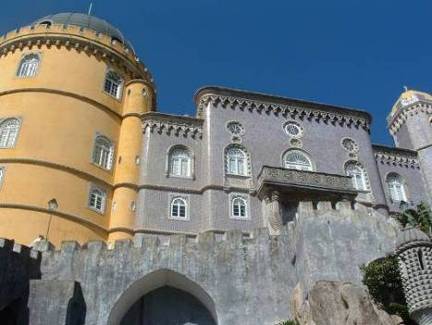

See what I mean?
We
dropped Jill at the airport and later picked up Martin Akery who also came out
for a few days’ sailing and to get used to the boat as he is crossing the Atlantic with us.
We
set of next morning (6th October) towards Gran Canaria. Initially
the wind was light from the south-west, but with a promise of veering to
stronger northerlies. 24 hours on and the wind had increased to 12 knots, but
only gone west. Slowly in veered further and increased, but by the time it
finally turned north and freshened to 22 knots it was the morning of the 8th
October and we were 300 miles down the track, except we were heading for
Madiera, so we decided to go there instead! The trip from Cascais was 485 miles
and took just over 60 hours, averaging 8 knots!
I’m
very glad we did, for Madeira was a
revelation. It is a beautiful, lush island, and far more affluent than I had
imagined, even on the rural north coast. We went to the new marina at Quinto do
Lorde. It was jammed full, so they asked us to wait outside for half an hour
whilst they moved boats all over the place to make room for us. After a
temporary stay on the fuel dock we were place between two superyachts. They
obviously recognised the superior quality of ‘Snow Leopard’.
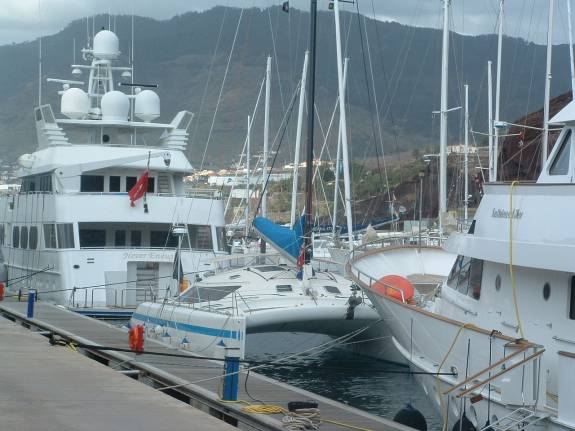
Our neighbours in Madeira
We
hired a car for the day to see some of the island. They have built a new
motorway along the south coast and the locals, having been freed from the
tortuous, hilly twisting roads, now all sped like budding formula 1 drivers –
unfortunately without the skill.
Funchal,
the main town is nothing special, but to the east past the fishing village of Camara de Lobos (with a stunningly
beautiful fishermans’ chapel) are the cliffs of Cabao Girao, which claim to be
the second highest in the world. Having looked down from the top (about 680metres)
I don’t doubt their claim and have no wish to stand at the top of whatever the
highest cliffs are!

View from Cabo Girao

The boat in the centre is an 80ft cat!
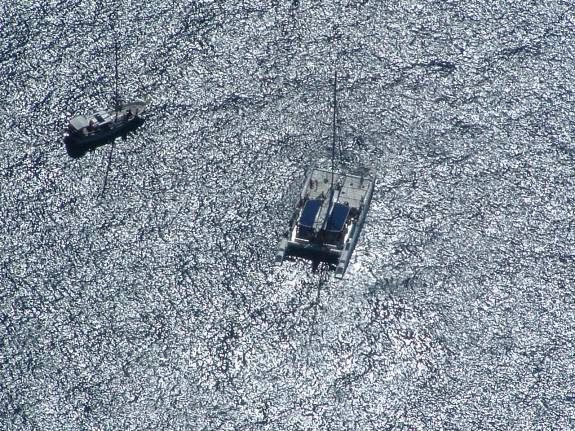


Camara do Lobos

Lionel and Lucy posing for the Cotton Traders mail-order
catalogue
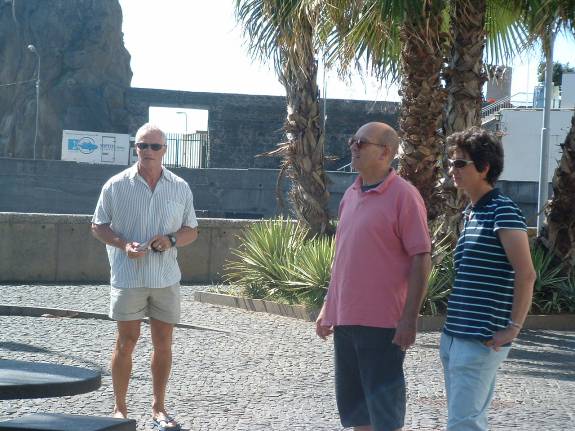
You can see why Martin (in background) doesn’t qualify!

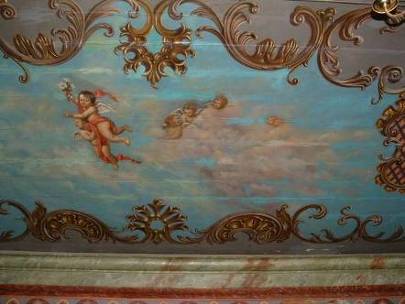

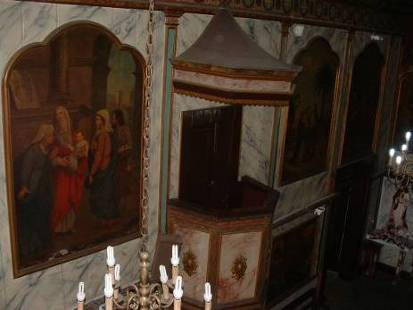
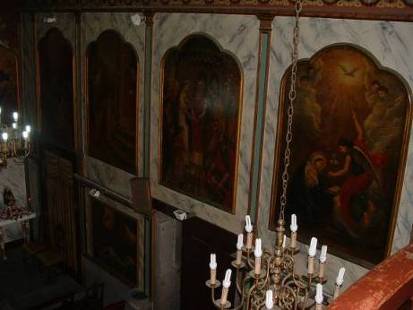
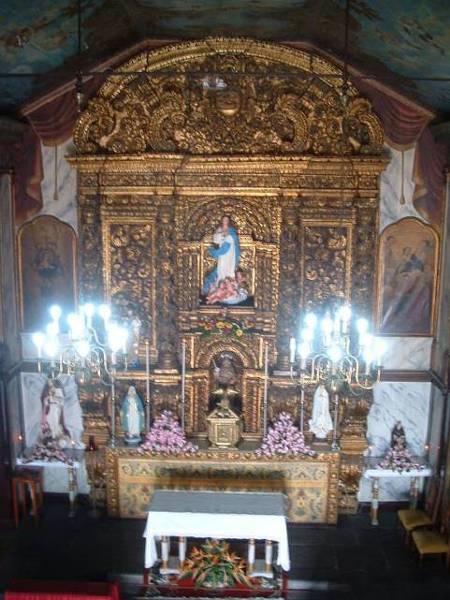
Interior of fishermans chapel, Camara do Lobos
Martin
had booked a flight back to England
from Gran Canaria. Fortunately Easy Jet have a great ticket change policy which
allowed him to fly from Madeira instead. So we
packed him off at the airport and decided to keep the hire car for another day
to explore the remainder of the island. What a fascinating place it is. The
north is lush with groves of bananas and real rainforest flora, the south is
drier with vines growing on terraces built on precipitous cliffs. With the
exception of the previously mentioned motorway, the roads twist and turn along
valley sides and high cliffs. Definitely not a drive for the feint hearted,
especially when going up to the central plateau at some 1600 metres, through
thick cloud and rain (sunny on the south side!). The plateau on the top is a
flat desolate moor not unlike Dartmoor and
just as wet and windy!
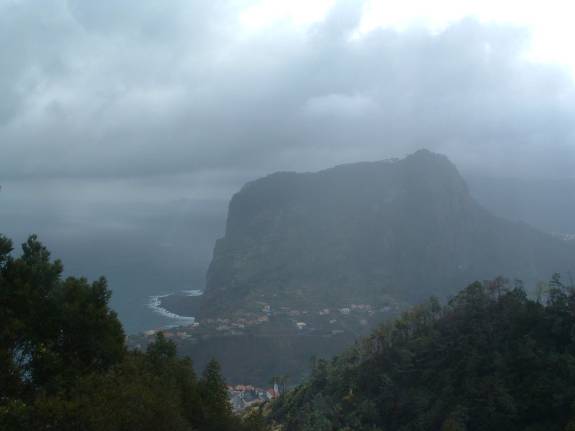
Wet and wild north coat of Madeira
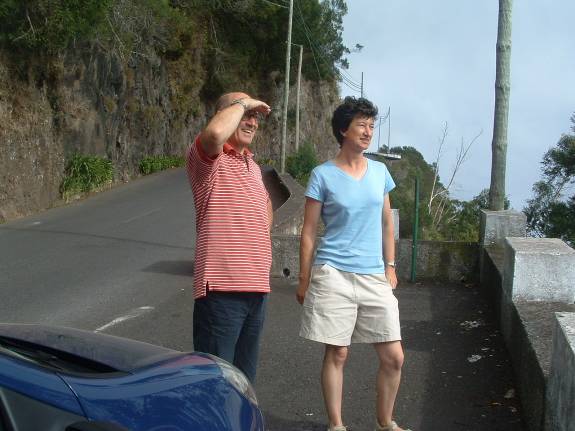
Another page from the Cotton Traders catalogue!
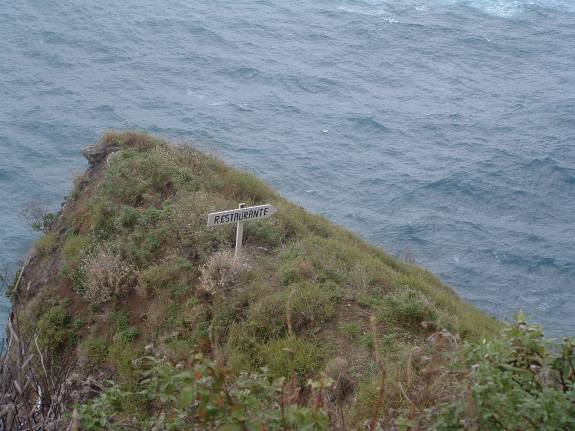
Food for thought! That’ll be a fish restaurant then?

One harbour we will not be visiting
We
set of on the afternoon of the 12th October to cover the final 250
miles to Las Palmas
in Gran Canaria. Again there was little breeze but we had plenty to entertain
us. First a whale blowing off to starboard, then as we motored toward the last
sighting of the whale a couple of huge dolphin decided to put on their own show
of acrobatics, including back flips and high jumps.
About
12 hours after leaving Madeira the wind got up
to 11 knots, which enabled us to sail at 9 knots with the Code 0 set. ‘Snow
Leopard’ is so easily driven that it takes so little wind to get her going at
great cruising speeds.
Next
day we passed between the Islas Salvagem, which lie halfway between Madeira and the Canaries, i.e. in the middle of nowhere.
They are a nature reserve and the only inhabitants and the reserve wardens. Now
there really is a job for those who want to quit the rat race! Nothing there
but sea birds, oh and a few wrecks including a French supertanker!

Gran Isla Salvagem
We
finally arrived at Las Palmas
at 4am, and tied to the reception pontoon for a few hours blissful sleep.
Next
day we were allocated a berth on the big-yacht quay (our class recognised
again), and far away from the hoi ploi.
Lionel
had a couple of day before his flight so we set of to explore Gran Canaria. The
south is a desert, with awful tourist development all along the coast. However
when you strike inland they soon disappear and you drive through a luna
landscape, ever going upwards. When you reach the summit it’s all change. Here
there is cloud and moisture and descending to the north coast one could be
forgiven for thinking that you had transferred back to Madeira.
Las Palmas is the eighth largest city in Spain and non too attractive. Nor
is the vast marina, but this is home for the next month so we’ll enjoy it. At
least it’s warm!
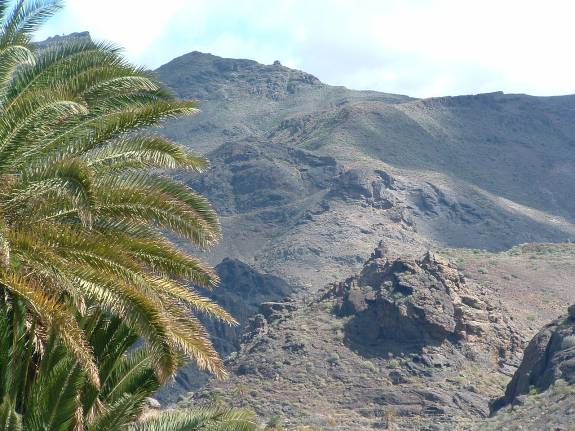
Gran Canaria interior

This is a major road, according to our map

Approaching the summit, and clouds!

Houses built into caves, towards the highest point on the
island. Yes it’s raining
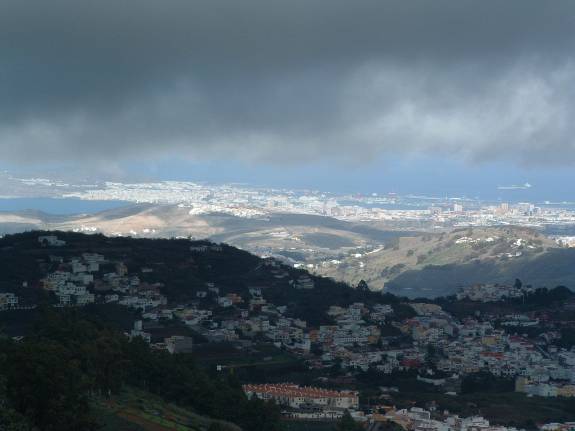
Over the top and descending towards Las Palmas
















































